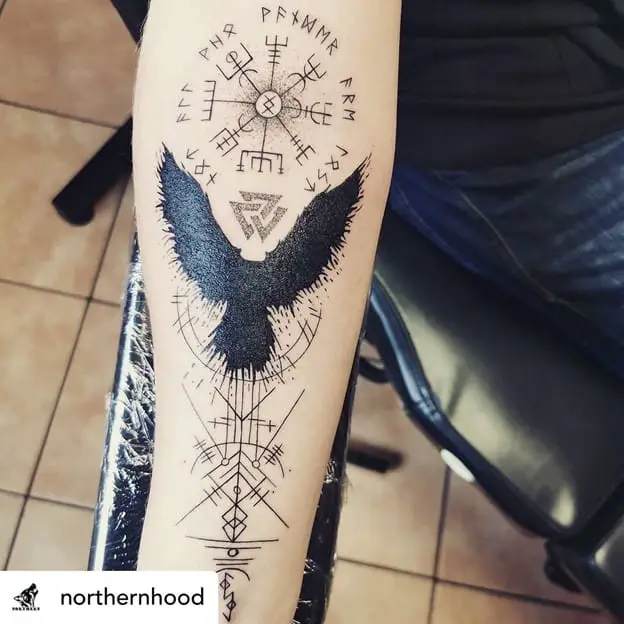


Originating from Ancient Greek culture, Hecate’s Wheel was the emblem of the Moon Goddess Hecate. The Solar Cross as a protective symbol is meant to evoke the power of the Sun God, casting light on the shadow of negativity. It has essentially been the source of inspiration for spiritual symbols spanning the globe including the Christian Cross, the Celtic Pagan Wheel of the Year, and the Native American Four Winds. While it was predominantly found in prehistoric cultures between the Neolithic and Bronze Age, there have even been carvings of it found that date back all the way to the Stone Age. The Solar Cross is widely considered to be one of the oldest spiritual symbols to ever exist. The one common theme that both manuscripts agree upon is that the vegvisir provided guidance and protection to those who used it. Although it’s definitely linked to Nordic culture, the only two sources mentioning its existence are the Huld Manuscript, which was written in 1880, and The Galdrabok, another manuscript that is widely considered to be a grimoire. While most people associate it with Viking lore, there is no definitive proof that the symbol actually originated from the Viking era. When it comes to its origins, the vegvisir is truly an enigmatic symbol. It’s also widely used by many modern-day Wiccans as protection against all types of evil. The symbol itself is made of up four inter-laced vesica piscis which represents fertility, birth, feminine sexuality, and the natural force of women. The Witch’s Knot itself was a representation of the knot magic used by witches during the Middle Ages, in which the symbol was commonly carved onto the doorways of homes and stables. Although the pentacle is often linked with summoning spirits, it is also considered a very powerful protective symbol against both negative and demonic energies.Īlso referred to as the Magic Knot and the Witch charm, the Witch’s Knot was originally used during the Middle Ages to ward off malevolent witchcraft. Neopagans view the five points of the pentacle as a symbol of the four elements (earth, water, fire, and air), with the fifth element representing the spirit, and the circle that encompasses it symbolizing the connection between the five elements. It was believed that medieval occultists viewed the pentacle as a representation of the human body. While often being associated with magical evocation, western occultism, and the grimoires of Solomonic magic, the pentacle to most people is usually connected to neopagan magical traditions, such as Wiccan traditions.


 0 kommentar(er)
0 kommentar(er)
